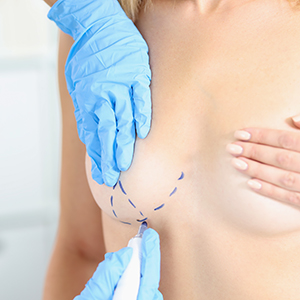Breast augmentation has gained widespread popularity as a cosmetic breast procedure. However, the safety considerations surrounding different types of breast implants are crucial for informed decision-making.
Today, we’ll explore the safety aspects of silicone and saline implants, shedding light on the key factors patients need to be aware of.
Silicone Implants: Mimicking Natural Feel with Silent Risks
Silicone implants have long been a preferred choice for breast augmentation due to their ability to mimic the natural feel of breast tissue. However, a significant safety consideration with silicone implants is the risk of silent rupture. Unlike saline implants, silicone implants may maintain their shape even when compromised, necessitating regular monitoring through imaging techniques.
Silent Rupture: A Hidden Concern
While studies by organizations such as the American Society of Plastic Surgeons (ASPS) find no conclusive evidence linking silicone implants to systemic health issues, the need for vigilant monitoring remains. Regular MRI scans are recommended to detect potential silent ruptures, ensuring early intervention if complications arise.
Saline Implants: Immediate Detection but Different Feel
Saline implants offer transparency in terms of rupture detection, as they visibly deflate if a rupture occurs. This immediate visual indicator simplifies the identification and management of potential issues.
However, patients must weigh this safety advantage against potential drawbacks, such as a less natural feel and the risk of rippling or wrinkling, particularly in individuals with thin breast tissue.
Rupture Transparency: A Safety Advantage
The immediate detection of ruptures with saline implants provides a distinct safety benefit. Understanding the trade-offs between this transparency and the potential for a less natural feel is crucial for patients when making their implant choice.
BIA-ALCL: A Rare Concern Linked to Textured Implants
Breast implant-associated anaplastic large-cell lymphoma (BIA-ALCL) has emerged as a rare but significant concern. Textured implants, designed to reduce the risk of displacement, are primarily associated with BIA-ALCL cases. Smooth implants, including both silicone and saline options, exhibit a lower association with this lymphoma.
FDA Monitoring and Recommendations
To enhance breast implant safety, the U.S. Food and Drug Administration (FDA) closely monitors BIA-ALCL cases and provides recommendations for patients with implants. Regardless of implant type, regular follow-ups with healthcare providers are recommended to monitor for any unusual changes in breast health.
Breast Reconstruction: Considering Implants and Autologous Tissue
For individuals undergoing breast reconstruction after mastectomy, the choice between implant-based reconstruction and autologous tissue (flap reconstruction) depends on various factors. These factors include the patient’s health, body type, and personal preferences.
Implant-Based vs. Flap Reconstruction
Understanding the options for breast reconstruction is essential for patients facing mastectomy. Whether opting for implants or autologous tissue, the decision-making process involves careful consideration of individual health factors and lifestyle preferences.
Routine Monitoring: Key to Long-Term Safety
Regardless of the chosen implant type, routine monitoring and maintenance are critical for ensuring the long-term safety and well-being of individuals with breast implants. Regular self-examinations, clinical breast exams, and imaging studies, as recommended by healthcare professionals, play a vital role in early detection and intervention.
Conclusion
The safety of breast implants, be it silicone or saline, is a paramount consideration for individuals seeking breast augmentation or reconstruction. This article has provided insights into the unique benefits and potential risks associated with each implant type.
Making informed decisions based on personal preferences, lifestyle, and health considerations, along with staying abreast of the latest developments, ensures the safety and success of breast augmentation procedures.


